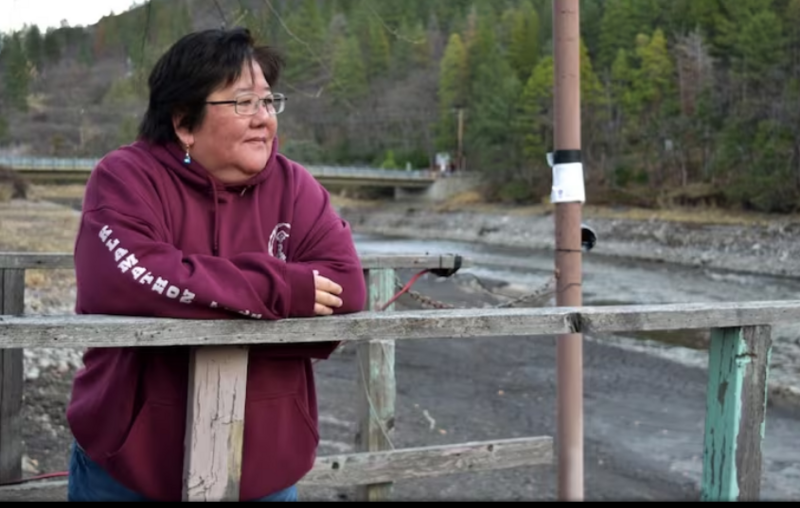by Juliet Grable at opb.org
Drawdown of three reservoirs on the Klamath River is well underway, and this step in the dam removal process has already dramatically altered the landscape along the river in Southern Oregon and far Northern California.
Iron Gate, the lowest of the three remaining dams, was first breached on Jan. 9, followed by J.C. Boyle on Jan. 16. On Jan. 23, a concrete plug in the tunnel at the base of Copco 1 was blasted away. The reservoirs drained swiftly, leaving behind vast expanses of fissured mud the color and consistency of chocolate cake batter. The Klamath River is winding through the naked landscape, finding its new shape.
The transformation has left some residents reeling.
April Sears, a resident of the Copco Lake community in California, says the last week has been “horrible.”
“First of all, we lost the lake,” she said. “It kind of hits you hard, like you lost your best friend or somebody.” A few days ago, she lost water in the home she rents on Patricia Avenue. Klamath River Renewal Corporation, the entity overseeing dam removal, is putting Sears up in a hotel in Ashland, Oregon, while they resolve the situation. Nearby, KRRC has already installed an above-ground tank to furnish 11 homes with potable water after their shared well failed.
For some residents, the worst part of drawdown has been witnessing its effects on the wildlife they have come to know and love. Many have seen dead fish stranded in the mud, and on Jan. 27, residents spotted a doe and yearling that had become hopelessly stuck trying to reach water. Volunteer firefighters from the Hornbrook Fire Protection District tried to rescue the mired animals but abandoned the mission as dusk fell. Soon after, an officer from California Department of Fish and Wildlife euthanized the deer.
“The mud was so thick; it was so far out there; they tried so hard,” said Chrissie Reynolds, a long-time resident of Copco Lake who drove to the scene to try to help. “But all that time, those animals were suffering.”

